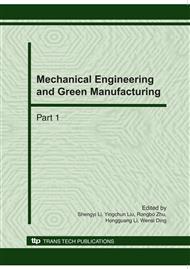p.1135
p.1140
p.1145
p.1149
p.1154
p.1159
p.1165
p.1170
p.1175
Application of Reverse Engineering Technology in Constructing Prototype Surface
Abstract:
Reverse engineering (RE) plays an important role in accelerating product research and borrowing ideals from other manufacturers. This paper describes the whole RE process from origin point acquisition to data processing for better point quality. Based on RE system of a toy prototype, a fine surface reconstruction module is developed. Measurement data are acquired by scanning the physical object using three-dimensional coordinate measuring machine (CMM) and an optical scanning device. After the establishment of the model, data process for prototype, includes noise elimination, data interpolation, data smoothing, data filtering, data splicing and surface reconstructing, are conducted subsequently. Through processing of measurement data, the authors succeed in creating a CAD model and fabrication of the product in stereo lithography apparatus (SLA) machine.
Info:
Periodical:
Pages:
1154-1158
Citation:
Online since:
October 2010
Authors:
Price:
Сopyright:
© 2010 Trans Tech Publications Ltd. All Rights Reserved
Share:
Citation:


